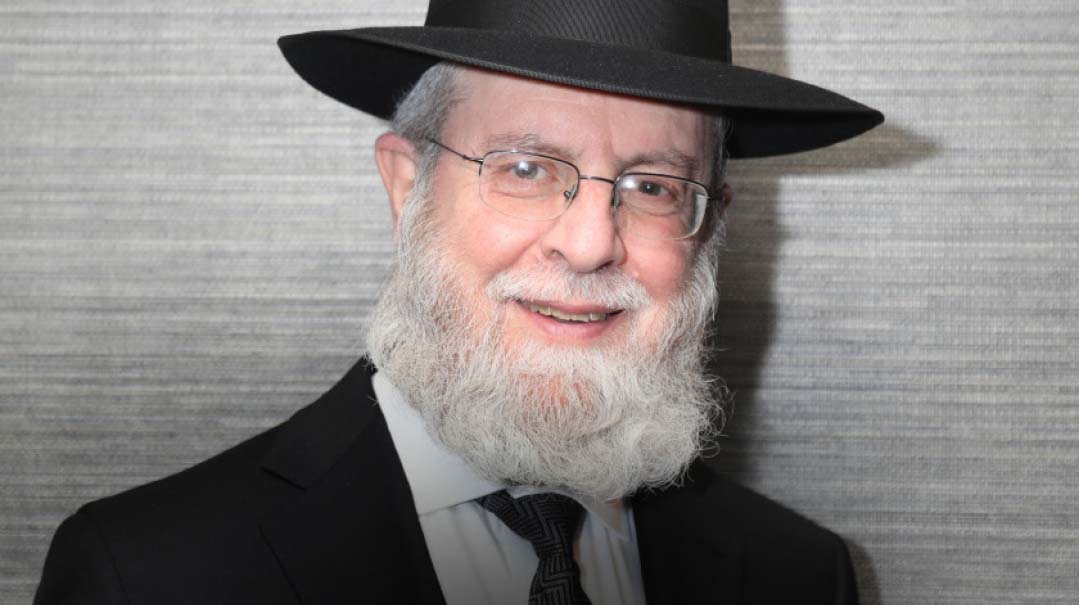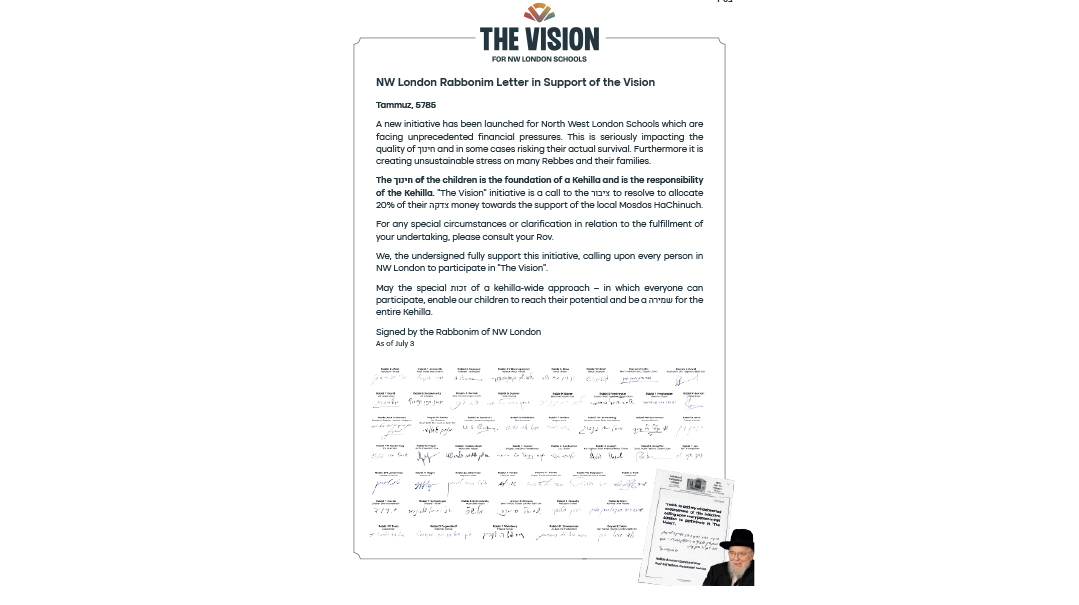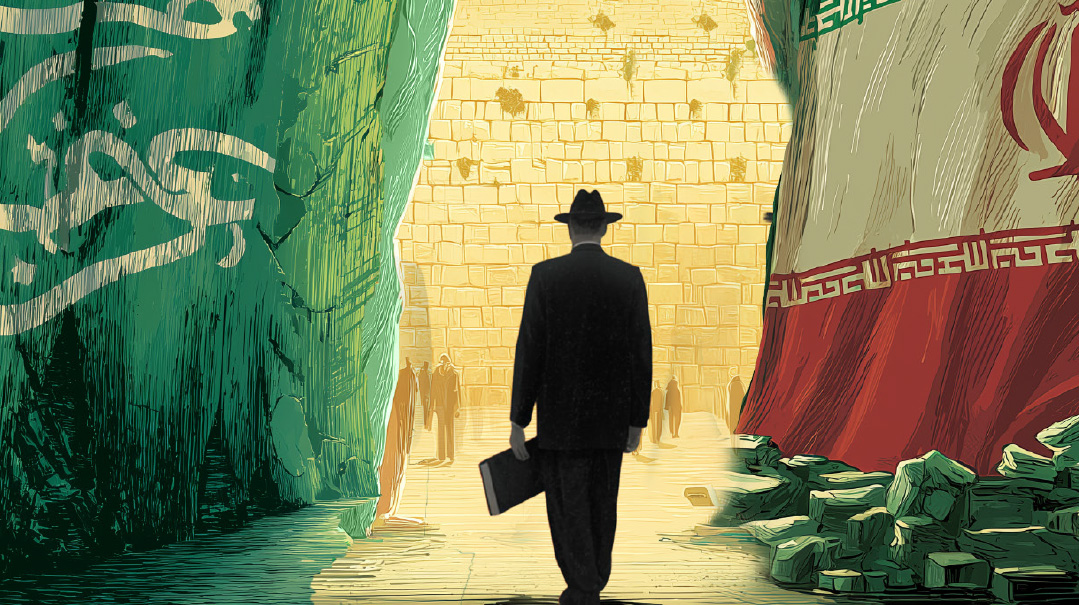The Moment Has Arrived

An interview with Rabbi Zev Cohen of Chicago’s Special Beis Din dealing with issues of abuse

Photo: Avraham Elbaz
Chicago’s Rav Zev Cohen was on the job less than five years when he first became aware that abusers were preying on members of his community. He was advised by daas Torah to establish a special beis din to deal with the issue. Three decades later, the success of that effort bears significance for the wider Torah world.
When I started thinking about how the Torah community can avoid repeating the traumatic events of the past few weeks, I kept coming back to one name: Rabbi Zev Cohen, the rav of Adas Yeshurun, one of the principal anchors of the West Rogers Park neighborhood of Chicago. With five kollelim from early in the morning until late in the evening, the voice of Torah is constantly heard in the shul.
Over the years, Rabbi Cohen has alerted me to many threats to our communities — the casual entry of cannabis into our celebrations, the dangers of the Internet — all of which he has spoken about loudly and forcibly in multiple forums.
But the reason that I thought about him now is that approximately 30 years ago, he played a pivotal role in the establishment of the first standing beis din to deal with abuse issues — the “Special Beis Din.” The Beis Din does not intend or attempt to substitute for law enforcement, but it has carved out a vital role of its own , using its intimate knowledge of the community to deny perpetrators access to past victims or potential future ones.
For years, Rabbi Cohen has been campaigning for communities across America to establish such batei din, and throughout our lengthy conversation, he reiterated frequently that he agreed to speak to Mishpacha in the hope of advancing the communal discussion on the topic.
How did the “Special Beis Din” come into existence?
About 30 years ago, the local mikveh association, Daughters of Israel, had a one-day event for women. At the end of the program, there were a number of breakout sessions, one of which dealt with the trauma of childhood abuse. The organizers expected a handful of women to show up for that. But more than 80 women attended that session. That was the wake-up call.
I was a young rabbi, less than five years in my position, and I did what I always did when I needed the guidance of genuine daas Torah — I called my rosh yeshivah, Rav Yitzchok Feigelstock ztz”l, the Long Beach Rosh Yeshivah. He advised me to set up a beis din to deal with the issue. So I spoke to the two senior rabbinic figures in Chicago at the time, whose authority spanned all the segments of the Orthodox community: the Chicago Telshe Rosh Yeshivah, Rav Avrohom Chaim Levin ztz”l; and Rav Gedaliah Schwartz ztz”l, av beis din of the Rabbinical Council of America and head of the Chicago Rabbinical Council.
They both agreed to serve as dayanim for such a beis din. We were also joined by Rav Shmuel Fuerst, a close talmid of Rav Moshe Feinstein and a nationally recognized posek and dayan. The prestige and authority of the dayanim would prove invaluable over the years in establishing communal trust in the beis din.
Did such a beis din exist elsewhere in the United States? Did you have any precedents in rabbinic literature for the Special Beis Din?
As far as we could ascertain, there were no such batei din then existing in North America, and perhaps in the world. The issue of molestation is barely mentioned in the teshuvah literature. And the leaders of the previous generation, Rav Moshe Feinstein ztz”l and Rav Yaakov Kamenetsky ztz”l, were no longer alive to guide us. That is just one of the reasons that the presence of a highly respected rosh yeshivah and dayanim was so crucial to the beis din’s success.
How did you get the word out about the existence of the Special Beis Din?
First, we contacted shul rabbanim, school principals, and therapists within the community. In the early years of the beis din, there were two high-profile cases, involving multiple victims, and our handling of those cases brought the existence of the beis din to public notice.
Just let me interject here that one of the things for which I’ve been campaigning a long time is that every community have a hotline, like the mental health hotlines that already exist, to which victims or their family members can call. The existence of such a hotline does two things. First, it sends a message to victims that the community takes their suffering very seriously and wants to help them. And second, it lets perpetrators know that there are mechanisms in place that make it likely they will be discovered. That, in turn, makes it much harder for them to tell victims, “No one will believe you.”
We have found that the fear of discovery, and the communal outcry that goes with it, is often a deterrent. It appears that the way the Special Beis Din has dealt with the cases has had a positive impact in reducing the instances of abuse. For instance, after our most high-profile case, in which we were forced to take a very public stand to stop the abuse, our caseload has dropped off considerably.
Before we talk about how the Special Beis Din works, can I just ask: Why don’t you just tell victims to go to the police?
If a victim tells us that she wants to go to the police, she receives our encouragement. But frequently, victims are too traumatized to testify to the police, and find it easier to speak to rabbanim. In addition, it is important to remember, one cannot just go to the police and have someone thrown in jail. We had one case where the victim wanted to go to the police. The accused immediately posted bail and was soon back on the streets. But at that point, we could no longer impose our own restrictions on the perpetrator, because the police were already involved.
How does the Special Beis Din decide whether the accusations are true or not? What is your standard of proof? It is clearly something much less than the two eidim, subject to rigorous cross-examination.
The standard that we apply is nikarim divrei emes — in other words, does the testimony of the victims have all the markers of truth. There are a number of instances in halachah in which a beis din can impose punishments to remove a threat to the community without the testimony of two witnesses. The Rambam paskens, for instance, that the beis din, in every place and every time, has the power to impose lashes on someone about whom there is a nonstop kol that he is involved in arayos [Hilchos Sanhedrin 24:5]. In the halachic literature, there are discussions of the degree of proof needed for the community to turn someone over to the authorities when that person — e.g., a counterfeiter — represents a threat that could bring punishment on the entire community.
I think it is important to know that over the past 30 years, there was only one case in which the accused denied the charges. In every other instance, there were multiple victims who testified, and the predators admitted what they had done as soon as we confronted them with the accusations.
I’ve had the feeling in many cases that the perpetrators were relieved to be caught and subject to restrictions that would prevent them from repeating their behavior. The Special Beis Din always imposes the requirement of undergoing therapy on the predator, though it never assumes that therapy by itself is adequate protection for the community.
What happens after the victim’s testimony and the perpetrator’s confession?
In formulating the restrictions to be imposed on the perpetrator, we first work together with local mental health professionals, who have ongoing relationships with state and city authorities. We present the accused with a set of carefully crafted requirements to which he must conform. That means that the perpetrator must be removed from all the circumstances and situations in which he had contact with his victims. And we try to ensure that he will never be in a place where his victims will see him. That has even included telling a father or a grandfather that he cannot attend his daughter’s or granddaughter’s wedding. Cases where siblings or other family members are considered a threat are obviously the most complicated, and require extreme sensitivity on the part of the Special Beis Din, working in conjunction with mental health professionals.
The perpetrator may be barred from the men’s mikveh and not allowed into shul without a constant shadow. And the permission to attend shul may be conditioned on leaving prior to the kiddush, and never departing from the area of prayer at any time. All those responsible for the places from which the perpetrator is barred or limited will be informed of the restrictions in place.
It is crucial that the perpetrator knows that he is being observed. And further, that if he violates the conditions we have set for him, the entire community will be alerted as to his deeds and his failure to comply with our restrictions. That remains a powerful deterrent even after the passage of much time.
Something I’ve been speaking about for years is the necessity of a national data bank of abusers so that they cannot just leave one place and return to their former ways in another city. We once had a case where we found out that someone on our lists had taken a job as a mashgiach for a Pesach program. Baruch Hashem, we were successful in having him removed before the program started, but a national database of shuls and organizations, like Agudah, Orthodox Union, and Young Israel, would have protected against him being hired in the first place.
I would guess the Special Beis Din is not exactly like we normally picture a beis din, with the two parties, both standing before the dayanim?
That is true. Just the sight of the perpetrator is often traumatizing for a victim, even if many years have elapsed since the abuse occurred. Unless one has personally had experience with abuse victims, it is impossible to understand the pain that they experience. They will require therapy, often for many years. The trauma continues to plague them for years to come, and unless dealt with, it is likely to result in lifelong struggles.
Many victims do not come forward for years out of feelings of shame and the fear that if anyone finds out about what happened to them, they will not be able to make a shidduch and the like.
The Torah explicitly equates violations of a woman to murder: “for like a man who rises up against his fellow and murders him, so is this thing” [Devarim 22:26]. And in some ways it is even worse than murder, because of the enduring pain.
A perpetrator once told me that he wanted to apologize to his victim. I told him that although there is a place for sincere apology, for what you have done, even if you prostrated yourself on the ground before the victim in a puddle of tears, it would not be nearly enough. An apology is for when you back up and break your neighbor’s headlight.
In formulating your remedies, what are your priorities?
Our first priority is the well-being of the victims, doing whatever is possible to help them overcome their pain. For instance, we may often ban the perpetrator from attending simchahs and other communal events where he or she might see the victim, and thereby cause them to relive what they went through.
Klal Yisrael are described as rachmanim bnei rachmanim. And no one has more claim on our sympathy than victims. Over the last two weeks, for instance, I’ve been asked repeatedly whether it is necessary to remove from one’s house the works of a certain author accused in front of a beis din. I’m not going to pasken for the entire world as to what they should or should not do on this matter. But I’m begging parents who feel they must retain the books to at the very least cover them and put them in a box or in the basement out of sight.
You have no idea who is going to come to your home and what they might have gone through. I was told about a woman who is today a teacher in a frum school and was herself a victim. She described walking into her school library and seeing the works of said author still prominently displayed. For her it was like a punch in the gut, absolutely devastating. In the immediate aftermath of the same story, I received calls from two victims who told me that they were re-traumatized just by the publicity surrounding the whole case.
The second priority, which goes hand in hand with the first, is ensuring that there are no further victims.
And a distant third is trying to assist the family of the perpetrator. There is nothing to be gained by unnecessarily depriving the perpetrator of all livelihood. If he owns a business or store that brings him into constant contact with potential victims, obviously he cannot continue in the store. But if he works in the back office, there is little sense in forcing the employer to fire him and leaving the family as a burden on the community.
Have your efforts generally been supported by the community?
To be effective, a Special Beis Din needs the support of the entire community. If the batei din that I envision are going to come into being, the initiative needs to come from both rabbanim and balabatim. Such batei din require communal resources to function effectively.
Have you also found yourself subjected to criticism?
Who is not subject to criticism? (Unfortunately, I bear the scars to prove it.) Usually, the criticism has been: Why weren’t you tougher on the perpetrator? Why didn’t you just go to the police?
In general, our relationship with the police has been excellent. The statute governing mandated reporters has changed frequently in recent years, but that issue has been negotiated by a group of frum therapists who have good relationships with the police.
It is a mistake, however, to think that the police will be more successful than we have been in stopping the scourge of abuse. The police have told us on many occasions that we are much better positioned than they are to supervise the perpetrator, by virtue of our familiarity with the milieu of the perpetrator and victim. What’s a mikveh? Where does the perpetrator daven, and what other situations are ancillary to synagogue attendance? The police know nothing about such things.
As I mentioned above, we support those victims who want to go to the police. I’ve testified in court in several cases where young men, now in their mid-twenties, have brought damage actions against those who abused them. Sadly, most of those plaintiffs are no longer observant, another indication of the devastation abuse has on the souls of victims.
Reb Zev, thank you so much for taking the time to speak to us about this vital subject.
Let’s just hope that the moment has finally arrived, as a consequence of the recent tragedies, for every medium-sized community to establish its own Special Beis Din, and for the smaller communities to be organized to refer to batei din in larger nearby cities. And that this conversation will serve as a catalyst for that.
A NOTE ON HILCHOS LASHON HARA
Rabbi Avrohom Neuberger
Cases of abuse perhaps highlight more than anything else the tension in the verse in Vayikra 19:16, “Lo seileich rachil b’amecha [Do not go out bearing tales among your people],” the primary source against speaking lashon hara, and its continuation, “lo sa’amod al dam rei’echa [do not stand idly while your fellow’s blood is shed].” The Torah included both prohibitions in a single verse to convey that just as there is a prohibition against saying that which must not be said, there is a terrible aveirah against not saying that which must be said (see Netziv ad loc).
Abuse cases are the ultimate high-stakes scenario because the very accusation is often the conviction in the eyes of many people. Such cases, therefore, must be handled with great confidentiality by a responsible beis din, to determine the validity of the claims. (The halachic grounds for beis din accepting testimony in the absence of the accused, and from minors and others who are generally not accepted for testimony, is discussed in the poskim — see Rema, Choshen Mishpat 33 — and is beyond the scope of this brief note.)
Once beis din determines that there are grounds for the accusation, then whether it is lashon hara for them to publicize their finding depends on a single factor: to’eles — constructive benefit.
Note that there are three categories of sinners to whom the prohibition of lashon hara completely does not apply: a mumar l’hachis (one who sins to anger Hashem; a renegade who has complete disregard for all mitzvos), a kofer (a heretic who rejects the basic tenets of the faith), and a moser (one who hands Jews over to the authorities). These three are not regarded as “amisecha” (literally, a member of your nation) at all, and one may speak lashon hara about them without needing to meet any requirements of to’eles.
In the case of abuse, however, we are dealing with a mumar l’teiavon, a renegade who acts out of physical desire. He retains some degree of amisecha and thus one may only speak lashon hara about him l’to’eles, for a constructive benefit.
The Chofetz Chaim mentions several examples of to’eles. The most obvious one is where the intention of the speaker is to prevent the predator (who is essentially a rodef) from causing future harm, Another example of to’eles is referred to as “leganos l’po’alei aven” or “l’kanei ha’emes,” to denigrate those who are of corrupt character, and to act out of a passion for the truth — i.e., to dissuade others from following in their ways. The Chofetz Chaim stresses that this pertains only to one who commits transgressions that are widely known, such as ni’uf (adultery), which is clearly the case when dealing with a predator.
Consequently, in the case of a predator who is not complying with beis din, both conditions of to’eles apply and there is no question of lashon hara at all. Furthermore, there would seem to be a to’eles in validating the victims of abuse when they see how predators are vilified by the community. Moreover, the Chofetz Chaim writes that there is no issur of lashon hara to speak about someone who defies the authority of a beis din. Lastly, the prohibition against speaking lashon hara about a dead person applies due to a cherem. This cherem, however, does not apply to a rodef.
Rabbi Avrohom Neuberger is the rav of Congregation Shaarei Tefillah of New Hempstead, the author of Positive Vision, a Chofetz Chaim Heritage Foundation project (Artscroll/Mesorah), and editor of the recently published Sefer Chofetz Chaim (ArtScroll/Chofetz Chaim Heritage Foundation).
(Originally featured in Mishpacha, Issue 894)
Oops! We could not locate your form.




